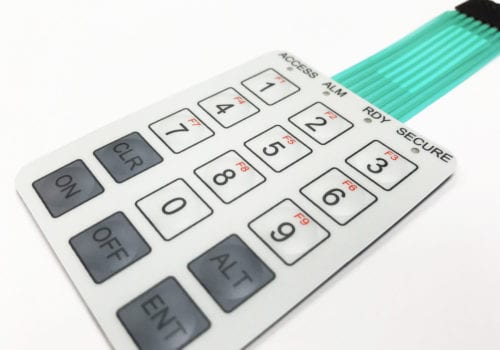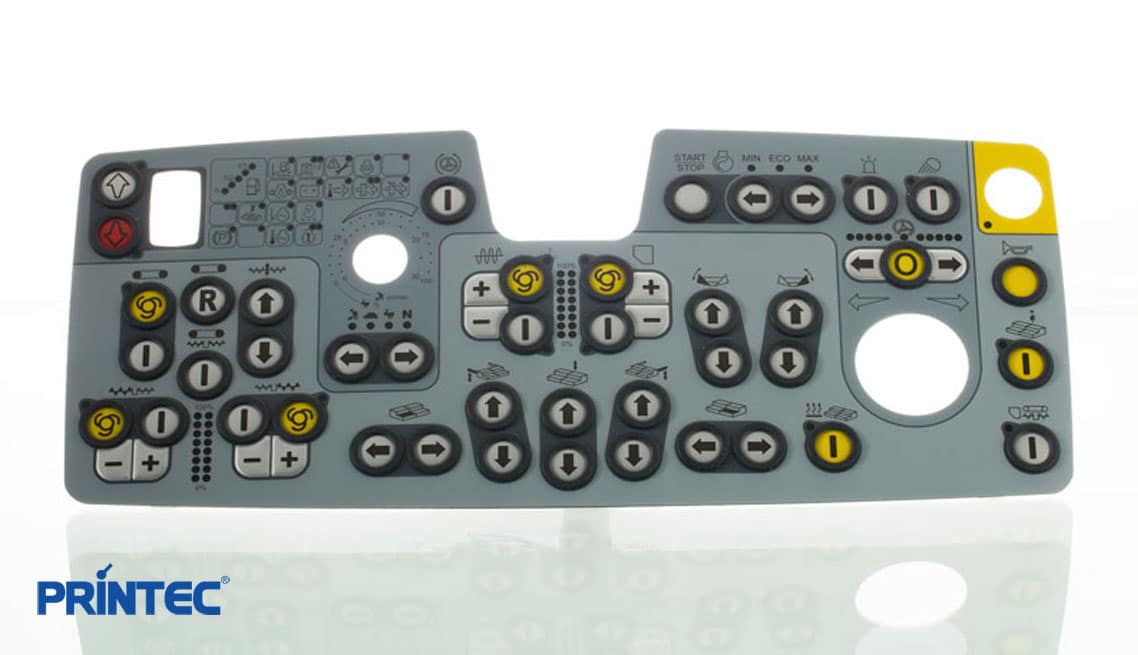Projects requiring accuracy should always involve a capable membrane switch manufacturer from the start.
Projects requiring accuracy should always involve a capable membrane switch manufacturer from the start.
Blog Article
Everything About Membrane Layer Change: Comprehending Its Style and Functionality
When you believe concerning the control interfaces in modern-day gadgets, membrane buttons usually enter your mind. These elements are greater than just switches; they mix design and capability flawlessly. Comprehending exactly how they work and what makes them efficient can alter your perspective on everyday electronic devices. Yet, there are nuances to their layout and performance that you could not understand. Let's explore what collections membrane layer switches in addition to various other control systems.
What Are Membrane Buttons?

Membrane switches can additionally be customized pertaining to shape, dimension, and graphics, allowing makers to produce distinct interfaces customized to certain items. On the whole, membrane buttons play a significant role in improving individual experience throughout a broad selection of applications.
How Membrane Changes Job
When you press a secret on a membrane switch, it triggers a simple yet reliable system. membrane switch manufacturer. The leading layer, typically made of versatile product, presses down onto a conductive layer under it.
You'll discover that the tactile feedback differs based on the switch style, providing either a soft click or a much more obvious reaction. When you launch the trick, the membrane layer returns to its initial position, resuming the circuit and stopping the signal. This process takes place virtually instantly, making sure a responsive customer experience.
Membrane layer switches are preferred because of their toughness and resistance to dust and dampness, making them ideal for various applications, from house devices to clinical tools. Comprehending this operation assists you value their widespread use.
Secret Components of Membrane Buttons
Understanding the crucial elements of membrane buttons is essential for comprehending their functionality and style. The safety layer shields against ecological elements and use, extending the button's life expectancy. By recognizing these elements, you'll obtain insight right into how membrane layer switches over run and their value in different applications.
Products Used in Membrane Layer Switch Style
The efficiency and toughness of membrane layer changes heavily rely on the products used in their style. You usually run into polyester and polycarbonate as primary substratums because of their outstanding toughness and flexibility. These products stand up to scratches and chemicals, making them ideal for requiring settings.
The conductive layers often make use of silver or carbon, chosen for their integrity and conductivity. membrane switch manufacturer. Silver provides premium efficiency, while carbon is a cost-effective choice. For the overlay, you could think about a matte or glossy finish, relying on your aesthetic requirements and individual experience
Adhesives play a crucial role also; they bond layers firmly and assure long life. Ensure to choose adhesives that endure environmental factors like temperature level and humidity. Do not neglect the importance of an excellent printing method for graphics, as it boosts both performance and aesthetic charm. check over here Selecting the appropriate products will certainly assure your membrane layer switch stands the test of time.
Style Considerations for Membrane Layer Buttons
While developing membrane switches, it's essential to take right into account different variables that influence their performance and user experience. Start by focusing on the layout and switch size; make certain they're intuitive and simple to navigate.
Confirm your layout fits environmental elements, like wetness or temperature variations, which might influence performance. By carefully thinking about these components, you'll produce a membrane layer button that enhances usability and complete satisfaction.
Applications of Membrane Switches
Membrane layer buttons are versatile components discovered in numerous applications, from industrial equipment to consumer electronic devices. You'll see their impact in devices that call for sturdy interfaces and in devices that profit from sleek designs. Comprehending these applications assists you appreciate the performance and functionality of membrane switches in daily modern technology.
Industrial Equipment Usage
When you're looking to improve the functionality of industrial devices, membrane switches supply a trusted option that combines resilience with user-friendly design. These switches are excellent for rough settings, giving resistance to dirt, dampness, and chemicals. Accept membrane switches to simplify your procedures and improve total efficiency.
Consumer Electronics Integration
In the domain name of customer electronics, membrane buttons play a crucial function in boosting individual communication and tool performance. Membrane buttons likewise ensure durability and resistance to dust and dampness, prolonging the life expectancy of your electronic devices. By picking membrane switches, you improve not just the functionality but additionally the design of your tools, making everyday communications smooth and pleasurable.
Benefits and Downsides of Membrane Layer Buttons
While membrane layer switches offer a variety of benefits, they likewise feature some downsides that you need to consider. One substantial benefit is their compact design, making them suitable for space-constrained applications. They're additionally cost-effective, supplying a long lasting remedy with a low production price. Additionally, their seamless surface is easy to tidy, boosting hygiene in settings like hospitals.

However, there are negative aspects. Membrane switches can have a shorter lifespan compared to mechanical buttons, specifically under hefty use. They can also be less tactile, which could affect user feedback throughout procedure. Furthermore, if click here for info damaged, repairing them can be difficult and typically calls for complete replacement. Inevitably, their level of sensitivity to severe temperatures and ecological problems may restrict their effectiveness in specific setups. Balancing these advantages and disadvantages will aid you establish if membrane switches are the ideal fit for your task.
Regularly Asked Concerns
The Length Of Time Do Membrane Switches Typically Last?
Membrane layer switches over commonly last in between 5 to 10 years, depending on usage and ecological problems. You'll wish to assess variables like wear, exposure to moisture, and temperature changes to gauge their long life successfully.
Can Membrane Changes Be Custom-made for Certain Styles?
Yes, you can tailor membrane layer buttons to fit certain designs (membrane switch manufacturer). You'll have the freedom to choose colors, shapes, and designs that match your task's needs, ensuring they mix seamlessly with your total aesthetic
What Is the Cost Range for Membrane Switch Production?
The price array for membrane layer switch manufacturing generally drops between $1 and $10 each, depending upon aspects like design intricacy, quantity, and products. You can get quotes from suppliers to find the very best alternative.

Are Membrane Layer Switches Over Water Resistant or Immune?
Membrane layer switches can be designed to be waterproof or resistant, depending upon products used and building and construction techniques. If you need them for wet environments, guarantee you define those needs during the layout procedure.
Exactly How Do Membrane Switches Contrast to Conventional Switches?
Membrane layer switches are typically thinner and much more versatile than traditional buttons, using a streamlined layout. They're usually easier to clean up and integrate, yet could not provide the tactile comments you're used to with mechanical options.
Verdict

Report this page